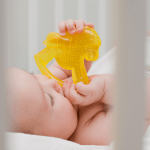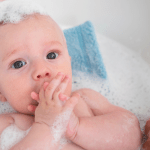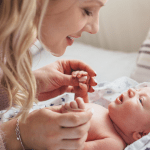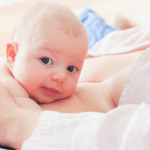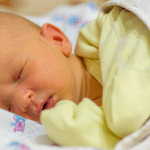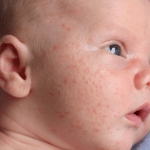There is not much in this world that compares to soft, beautiful baby skin… at least not for the baby’s parents. However when dry patches, hives, rashes, and other skin problems occur, it is no reason to panic.
From eczema to dry skin, skin irritations are not uncommon in babies. The most important thing is to establish what initially caused the irritation, and then decide the best course of action.
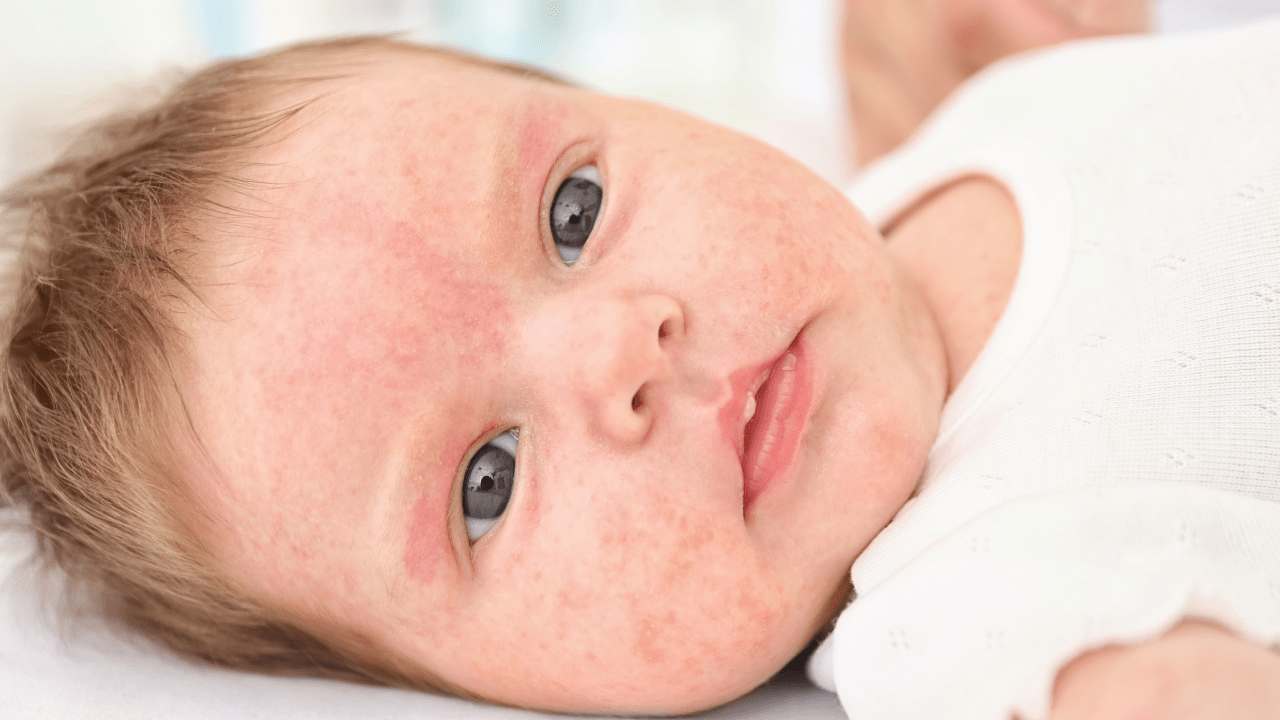
So, let’s go over the most common reasons behind baby skin rashes.
1. Baby can develop a teething rash
Did you know that baby’s saliva can irritate their sensitive skin? When a baby is teething, they tend to drool a lot more, and this causes the skin around their mouth to become red and bumpy. Teething rash is generally nothing to worry about – make sure to check out my other video where I go into more detail about it!
2. Baby comes in contact with something outside
Your baby could be crawling outside on the lawn of freshly cut grass, which irritated their skin causing a rash or hives. Generally, skin rashes from things outdoors disappear on their own. However, if they appear with other symptoms like swelling or difficulty breathing, seek immediate medical attention.
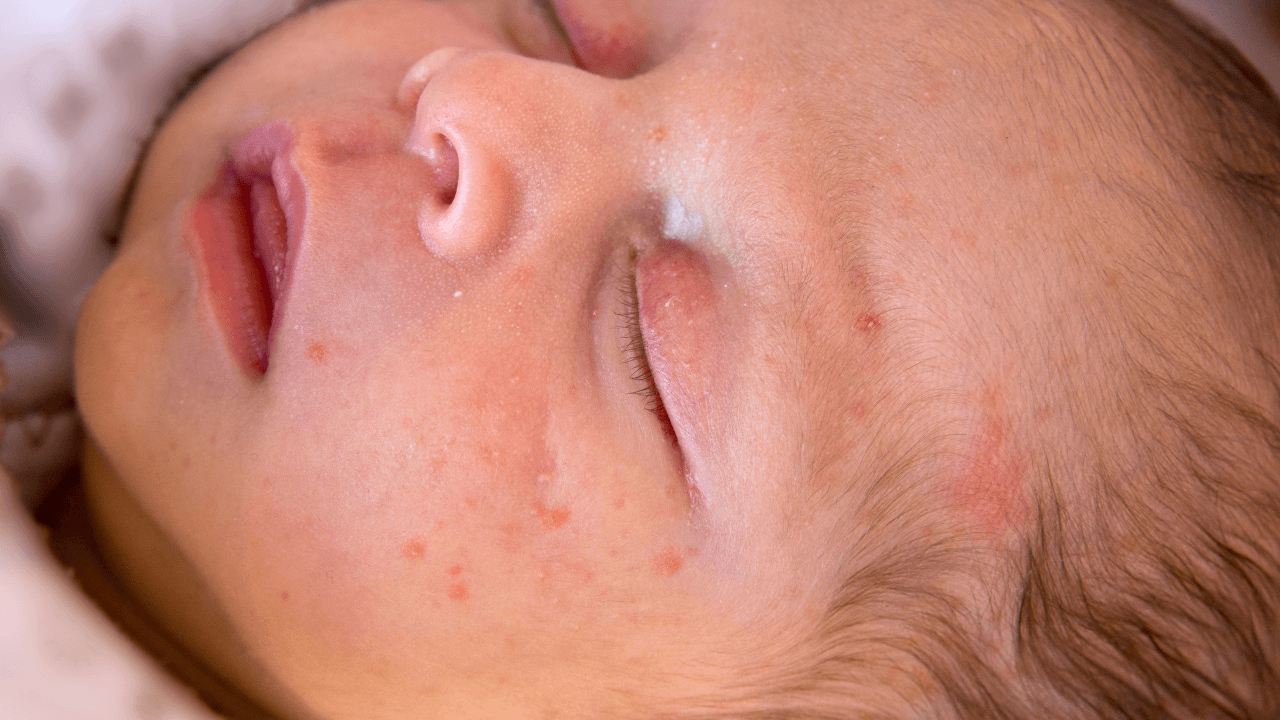
3. Baby rashes from food
Baby’s skin may also rash as a result of allergies to certain foods. When a baby’s body mistakenly treats proteins found in certain foods as a threat, it releases chemicals that can cause the symptoms of an allergic reaction – including rashes. Nuts, eggs and milk are common food allergens, as is shellfish. If you believe your child has a food allergy, speak to a healthcare professional.
4. Skin rashes from chemicals
This often overlooked but most common reason for skin rashes is that baby’s skin is incredibly sensitive and can become irritated from chemical ingredients in personal care products of the mother or father and household products. This results in redness or inflamed looking skin. Many conventional products from soaps, to baby powders, to bubble baths and lotions contain perfumes or other chemical preservatives, so if parts of their skin suddenly look dry and red, try to establish whether it may be down to a new product, and refrain from using it.
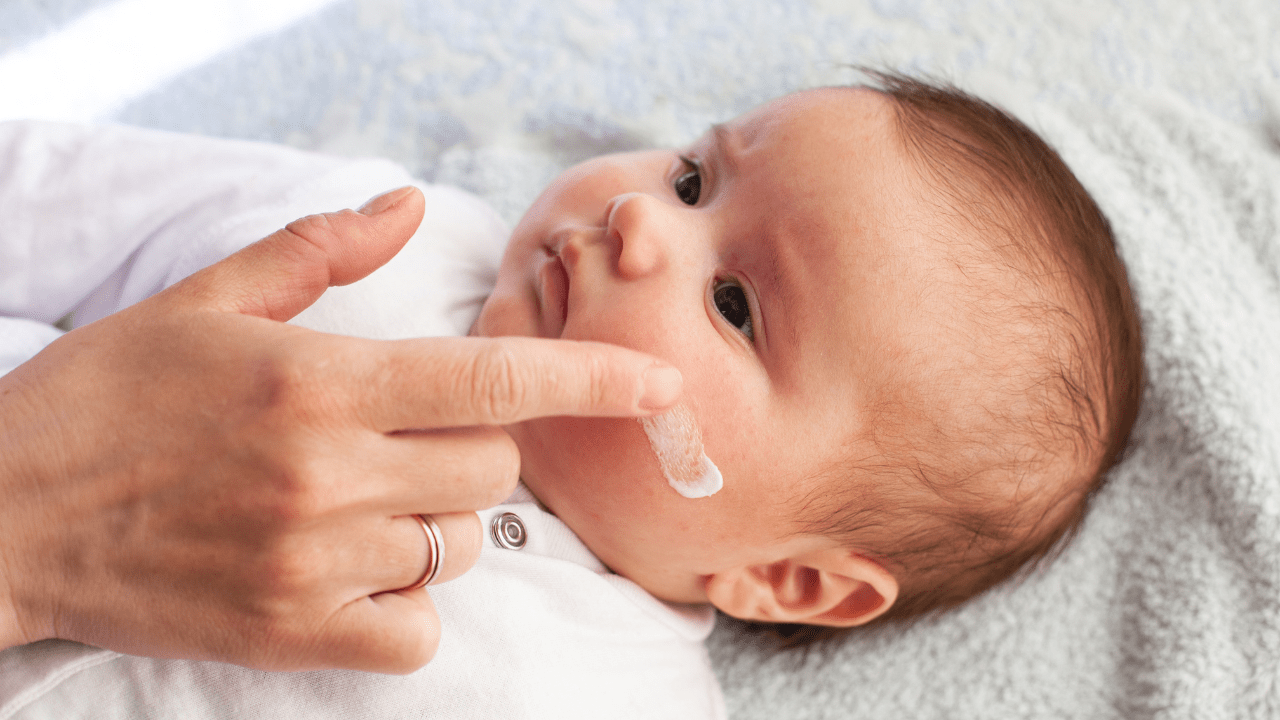
What can you do as a mom to help your baby with a skin rash or allergy?
As I said, the most important thing is to establish what initially caused the irritation, and then decide the best course of action. Oftentimes, you may be able to find out the reason for baby’s skin allergy and then avoid what causes it. If you are ever concerned about your child’s rash, always seek medical advice.
Well, if you want to do what’s best for your baby, and help improve the skin of your baby and its skin barrier, which will help prevent rashes, switch to baby-safe, water-free, chemical-free skin products, also for yourself.

